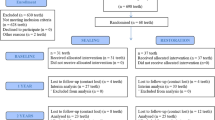Abstract
Aim: To assess the effectiveness of three treatment methods (ART, CarisolvTM and rotary instruments) in caries removal and sealing capability of hand-mixed glass ionomer in the management of proximal caries in deciduous molars. Methods: In a clinical study 217 dentally naïve children (age 7.5, SD 0.57) were randomly divided in three treatment groups and among 4 operators. Each child received one class II glass ionomer restoration. Immediately after restoration bitewings were made. The dependent variables were: residual caries and marginal adaptation. Independent variables were operator effect, child’s behaviour and time to remove caries. Results: There was no statistical significant difference in residual caries between the three treatment methods (p> 0.05). In 33% of the cases a clear radiolucency underneath the restoration was visible on the bitewings. In 26% doubt existed on the presence of residual caries. A clear cervical gap was seen in 16% of the restorations, while in 18% signs of cervical gaps were less obvious. Between the four operators a significant difference in relation to residual caries (p=0.015) was found as well as a significant difference between the operators for the preparation time in the three treatment methods (p<0.05). The child’s behaviour seems to have no influence on residual caries and marginal gaps. Conclusion: This study indicates that there is no preparation method superior to another, though the treatment methods seem to be sensitive for operator effects. Using hand-mixed glass ionomer cement resulted in considerable number of cervical gaps found.
Similar content being viewed by others
References
Amerongen WE van, Eggink CO. The cervical margins of amalgam restorations: a radiographic and clinical assessment. J Dent Child 1986: 53:177–183.
Banerjee A, Kidd EAM, Watson TF. In vitro evaluation of five alternative methods of carious dentine excavation. Caries Res 2000; 34: 144–150.
Colt BO, Welbury RR. The Atraumatic restorative treatment (ART) technique; does it have a place in everyday practice. Dent Update 2000; 27(3): 118–20, 122–3 reviews.
Dungen GM van de, Slater AEH, Amerongen WE van. ART of Conventioneel? Onderzoek resultaten van proximale resturaties in tijdlijke molaren. Ned. Tijd. Tandeelkunde 2004; 11: 345–349.
Frencken JE, Holmgren CJ. Atraumatic restorative treatment for dental caries. 1st Ed STI Book b.v., 1999.
Kreulen CM. A study on assessing quality aspects of class II restorations, resin composite versus amalgam. PhD thesis, Amsterdam Oct 1992.
Lo ECM, Holmgren CJ. Provision of Atraumatic Restorative Treatment to Chinese pre-school children — a 30 month evaluation. Int J Paed Dent 2001 1; 11:3–10.
Mickenautsch S, Rudolph MJ, Ogunbodede EO, Frencken JE. The impact of the ART approach on the treatment profile in a Mobile Dental System (MDS) in South Africa. Int Dent J 1990; 40: 11–7.
Munshi AK, Hegde AM, Shetty PK. Clinical evaluation of Carisolv in the chemo-mechanical removal of carious dentin. Int. J Paed Dent 2001; 26(1):49–54.
Nielsen CJ. Effect of scenario and experience on interpretation of mach bands. J. Endod. 2001: 27(11):687–91.
Rudolphy MP, Amerongen JP van, Penning CH, Cate JM ten. Validity of bitewings for diagnosis of secondary caries in teeth with occlusal amalgam restorations in vitro. Caries Res 1993; 27: 312–316.
Ryge G. Clinical criteria. Int. Dent. J. 1980: 30: 347–358.
Schriks MC, Van Amerongen WE, Atraumatic perspectives of ART: psychological and physiological aspects of treatment with and without rotary instruments. Comm Dent Oral Epid. 2003; 31(1): 15–20.
Splieth C, Rosin M, Gellissen B. Determination of residual dentine caries after conventional mechanical and chemo mechanical caries removal with carisolv. Clin. Oral Invest. 2001 5: 250–253.
Taifour MD. Effectiveness of the ART approach in child population in Syria. PhD thesis, Nijmegen Dec, 2002.
Author information
Authors and Affiliations
Corresponding author
Rights and permissions
About this article
Cite this article
Mhaville, R.J.A., van Amerongen, W.E. & Mandari, G.J. Residual caries and marginal integrity in relation to class II glass ionomer restorations in primary molars. Eur Arch Paediatr Dent 1, 81–84 (2006). https://doi.org/10.1007/BF03320819
Published:
Issue Date:
DOI: https://doi.org/10.1007/BF03320819




